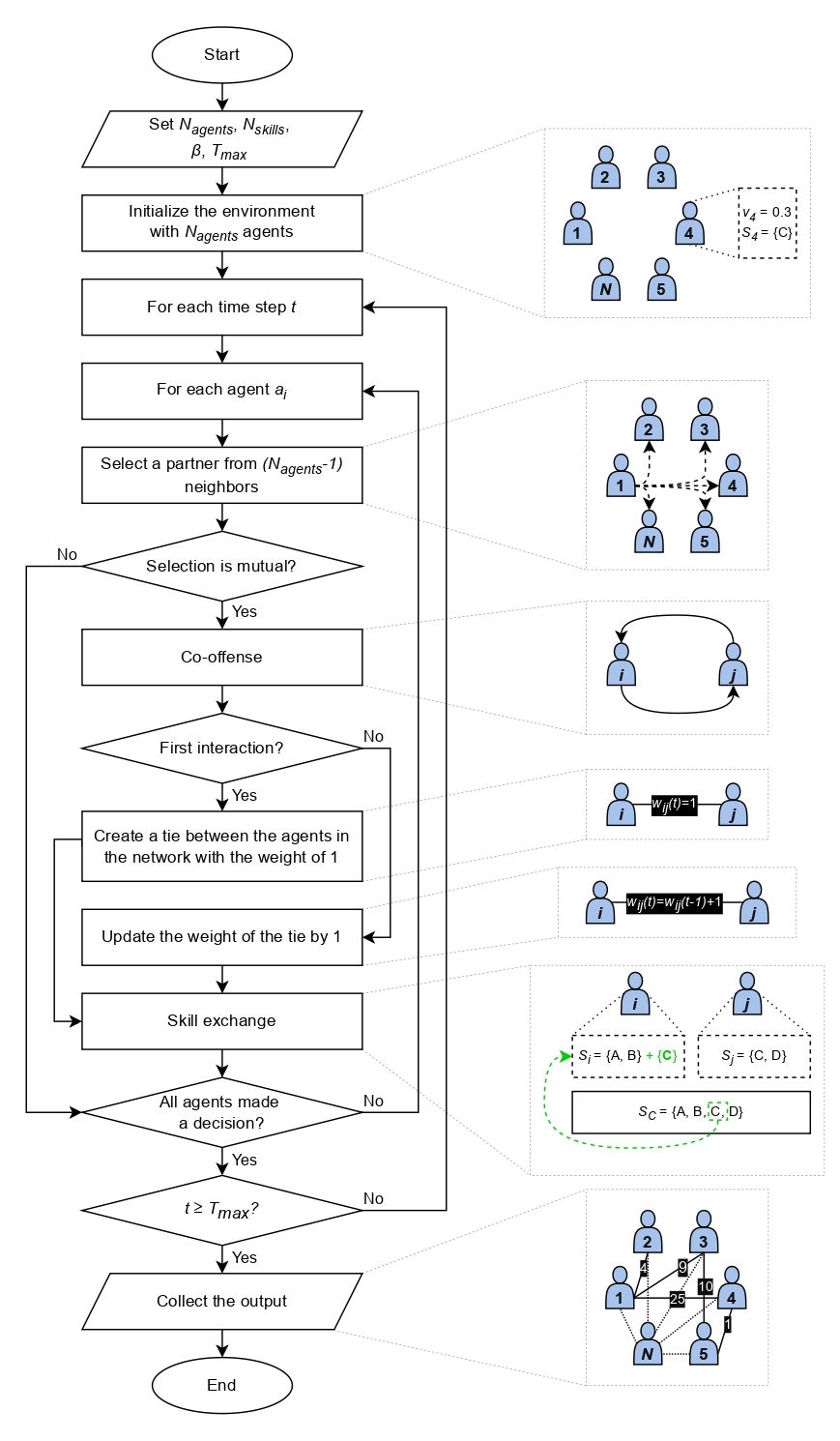Homophily promotes stable connections in co-offending networks but limits information diffusion
- Rafal Tekreeti

- Aug 8
- 2 min read
Authors: Ruslan Klymentiev, Luis E. C. Rocha & Christophe Vandeviver*
Summary written by: Ruslan Klymentiev

Why do some offenders repeatedly work with the same partners, and how does this affect what they learn from each other? This study explores how homophily, the tendency to choose partners who are similar to oneself, shapes co-offending networks and the spread of criminal skills. Using an agent-based model, the research shows that homophily promotes stable, repeated partnerships, creating tightly knit groups. However, this stability comes at a cost. The overall flow of new skills across the entire network slows down. These findings highlight an important trade-off, in which similarity strengthens partnerships and builds trust but can limit broader learning in criminal groups.

Key findings
Homophily fosters stability. Offenders who prefer similar partners form stable, long-term connections with repeated interactions.
Networks become clustered. This preference leads to sparse networks with dense subgroups.
Information diffusion slows down. Although skills spread quickly within subgroups, they travel more slowly across the whole network.
Exposure matters. Offenders with broader, less clustered connections acquire more diverse skills than those embedded in tightly knit cliques.
Practical insight. The findings help explain why disrupting key connections in criminal networks can be effective, and why not all offenders benefit equally from co-offending.
How did VSC contribute to our work?
Although our agent-based model is relatively simple, running thousands of simulations to capture these dynamics would not have been possible on a local machine. The VSC’s high-performance computing resources made this work feasible and allowed us to generate robust insights into how homophily shapes criminal networks.
About the Author:
Christophe Vandeviver is a long-time VSC user and researcher whose work has consistently leveraged high-performance computing to explore complex criminological questions. His contributions to computational criminology were also featured in a VSC Success Story video, showcasing how VSC’s infrastructure supports advanced research on crime networks.
Citation: Klymentiev, R., Rocha, L.E.C. & Vandeviver, C. Homophily promotes stable connections in co-offending networks but limits information diffusion: insights from a simulation study. Crime Science 14, 9 (2025). https://doi.org/10.1186/s40163-025-00254-w
🔍 Your Research Matters — Let’s Share It!
Have you used VSC’s computing power in your research? Did our infrastructure support your simulations, data analysis, or workflow?
We’d love to hear about it!
Take part in our #ShareYourSuccess campaign and show how VSC helped move your research forward. Whether it’s a publication, a project highlight, or a visual from your work, your story can inspire others.
🖥️ Be featured on our website and social media. Show the impact of your work. Help grow our research community
📬 Submit your story: https://www.vscentrum.be/sys




